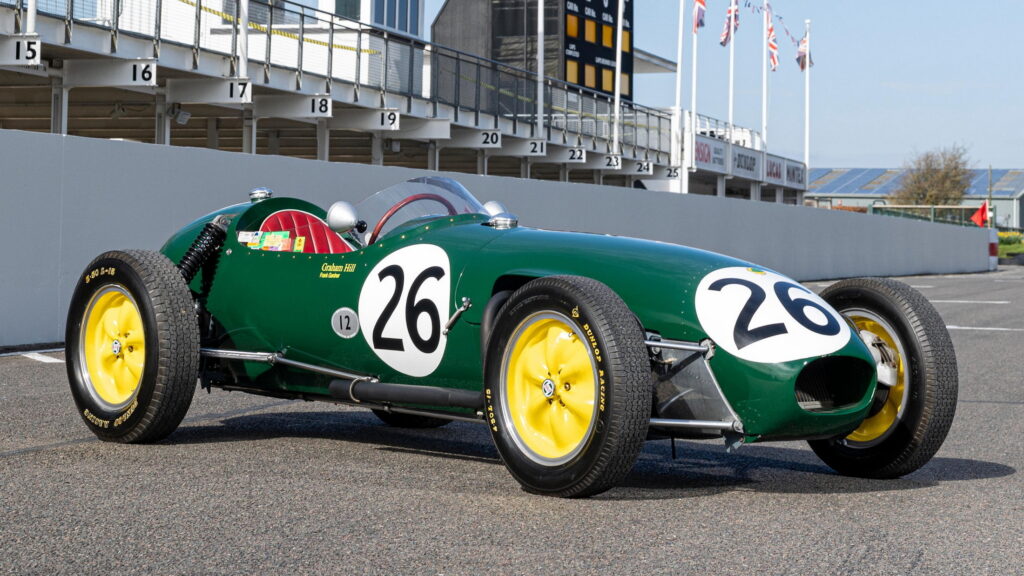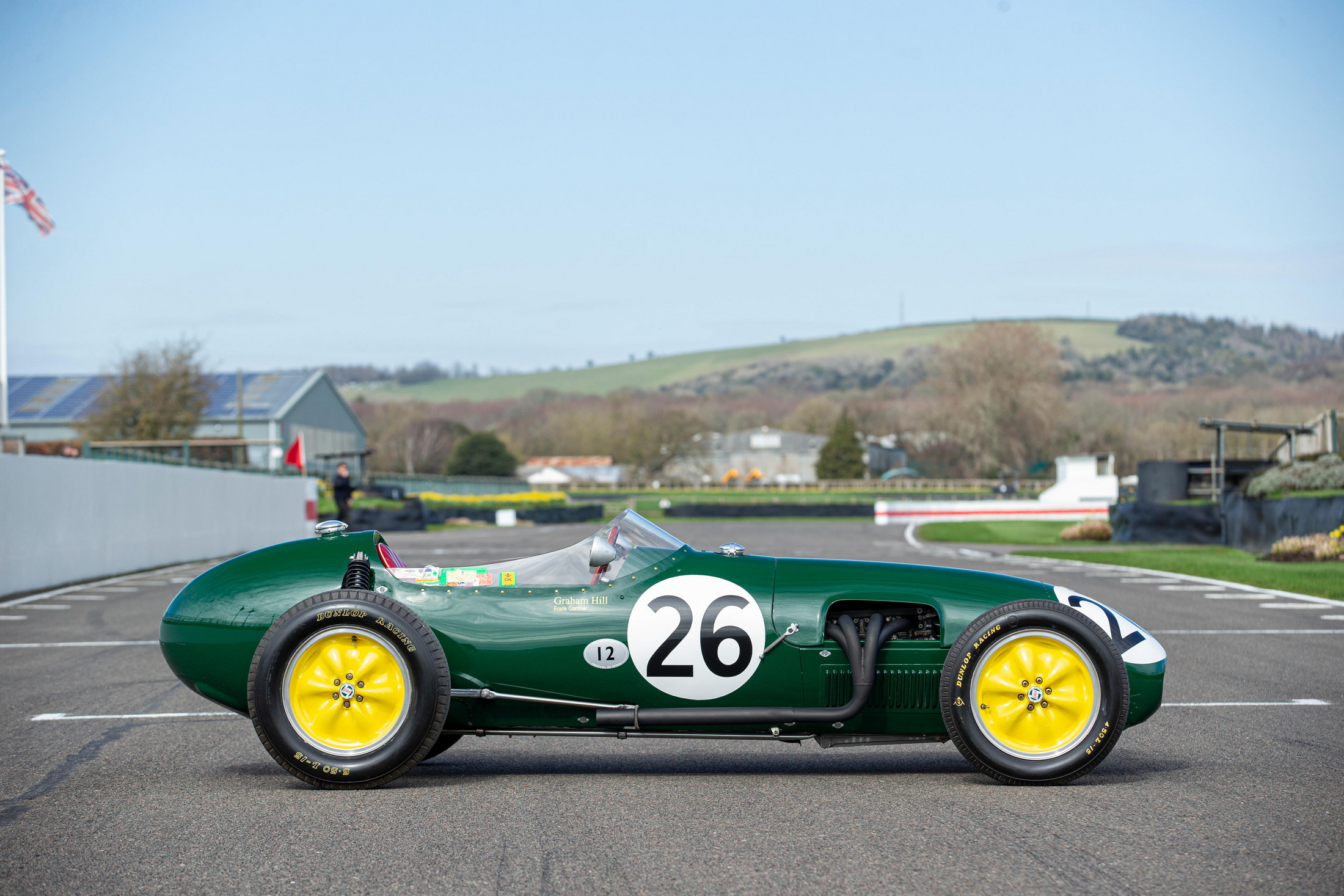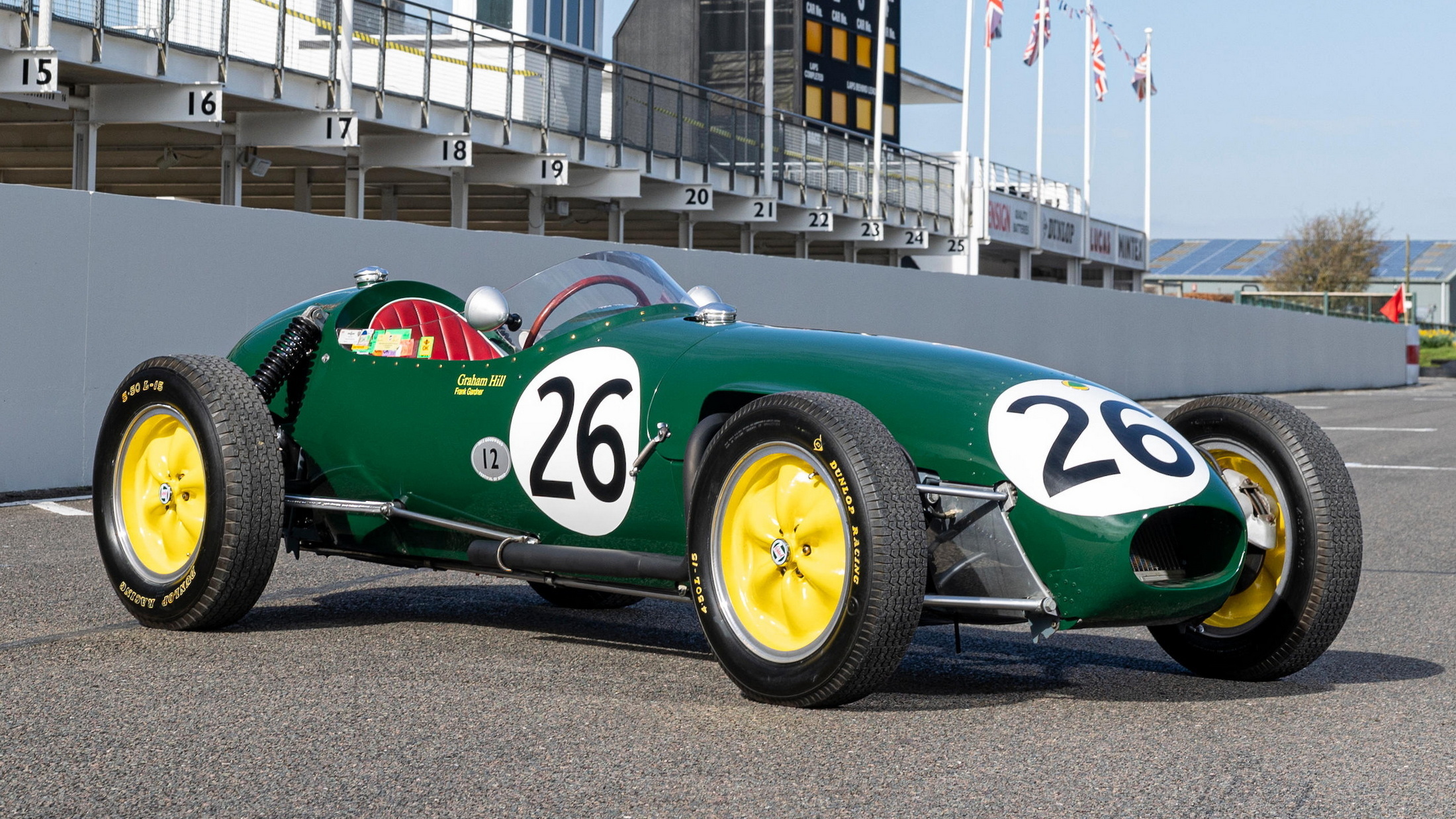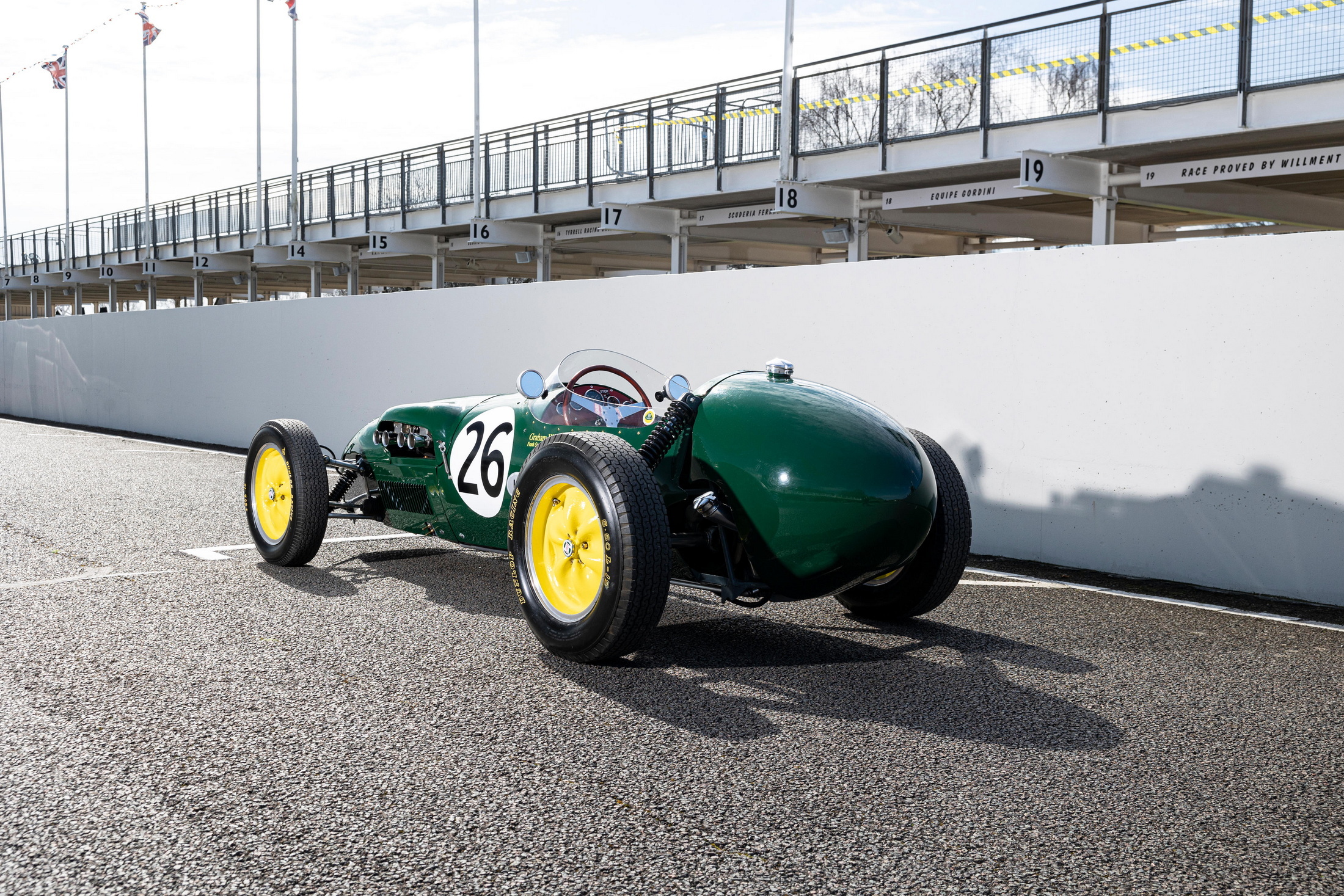- The Lotus Type 12 was the first car the company raced in Formula 1.
- Chassis #353 was driven by Graham Hill at the 1958 Monaco Grand Prix.
- Bonhams estimates that it could sell for over $400,000.
Lotus is one of the legends of F1, winning seven Constructor Championships and six Driver Championships between 1963 and 1979. But they all have to start somewhere, and for the legendary British automaker, that’s here.
This 1957-58 Lotus-Climax Type 12 Formula 1 was the first car the brand ever entered in a Grand Prix. To make its provenance even more impressive, it also happens to be the first car racing legend Graham Hill ever to drive in F1. Hill even raced with it at the Monaco Grand Prix, a race he would later become synonymous with, winning it five times throughout his career.
Read: Six-Wheel Tyrrell P34, The Zaniest F1 Car Ever, Could Sell For As Much As $700k
The Lotus 12 was first shown at the London Motor Show in 1956 and featured many innovations. It carried a mock-up of the latest 1475cc four-cylinder twin-cam engine from Coventry Climax FPF and was hooked up to Lotus’ sequential “queerbox,” as it would come to be known.
With bodywork designed by a DeHavilland aerodynamicist and aircraft-spec tubing for its spaceframe, the Lotus 12 was at the forefront of vehicle design, making it extremely light. Although it was claimed that it had a dry weight of just 620 lbs (281 kg) in its era, that figure is now believed to have been exaggerated, with estimates putting it close to 771 lbs (350 kg), which is still impressive. The first Lotus F1 car also had 6 lug nuts, instead of 1, because they believed it was so light, it wouldn’t need to change tires during races.
With its Formula 2 engine under the hood, the Lotus 12 made 141 hp (105 kW / 143 PS), giving it a power-to-weight ratio of around 451 hp (336 kW / 457 PS) per ton. Indeed, the car performed well, earning a 1-2 finish at the September 1957 BRDC International Trophy race at Silverstone. Despite being quick, Hill describes it as being a bit of a handful, especially with its 2.0-liter F1 engine.
He would later write that the heat from the engine and the exhaust pipes was sweltering and that with its “stretched out” engine, the Lotus 12 required smooth, gentle driving. At the 1958 Monaco Grand Prix, the driver found himself in fourth position by lap 75 of 100. Unfortunately, the race would end poorly.
“As I turned into Portier, the corner that leads back along the seafront before the tunnel, the car suddenly spun around and the revs went soaring up,” wrote Hill. “I thought it was a bit strange, so I looked out and I noticed that the rear wheel was alongside the cockpit. I climbed out and promptly fell over. I was suffering from heat exhaustion and was as weak as a kitten. I had to get the marshals to help me to pull the car back off the track.”
Like Hill, the Lotus 12 remains a charming piece of well-documented Lotus history. Since 1991, the car has been in the possession of Mike Bennett, who literally wrote the book on the Lotus 12, ‘Lotus 12 Chassis 353 The History’. Unsurprisingly, it is extremely well taken care of, and it’s offered in highly original condition.
Set to cross the auction block at Bonhams’ The Monaco Sale on May 10, the first Lotus F1 car is estimated that it will go for between €290,000 and €390,000 (around $308,900 and $415,500 at current exchange rates).


































